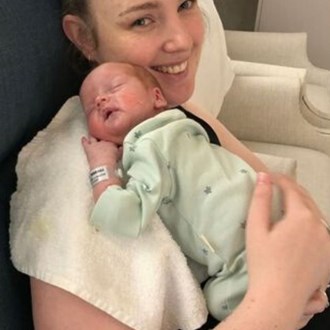Put your baby to sleep in six easy steps

Some helpful advice to get your bub off to the land of nod
By Cheryl Fingleson
July 01 2016
For some, getting bub to sleep is as simple as reading a book and kissing them good night, for others they may be experiencing a night long battle to get their little one to sleep through the night (those two hourly wake ups make it difficult to survive).
Here are some helpful tips to get your little one to sleep in just six easy steps:
Anticipate sleep time
Anticipating sleep time is a good way to begin the night routine. Once your little one knows that ‘sleepy time’ has begun, he can start to wind down knowing what’s to come. Perhaps you might start with bathtime, draw the curtains, read a story, then bed. What’s important here, is not what you do but the consistency. As your child grows up, the routine usually stays the same, but the older, the wiser and so it can take that little bit longer. Keep it simple.
It’s time to sleep
Talking to your baby will serve as a great benefit. Although he may not understand exactly what you are saying, repeating the same phrase each and every night will become part of the sleep routine. "Sleepy time Jonah, sweet dreams" and a kiss or whatever you say before bedtime, should be repeated each night.
Calming your baby
Once you have completed your nightly routine, your aim is to calm your baby to a sleepy stage. All babies are soothed and relaxed in different ways, such as rocking or patting. What works for your friend’s baby, may not work for you. Each baby responds differently, work out what works best for your baby and then use that method.
Sleepy signs
With a newborn, we can identify their sleepiness….yawning, rubbing eyes and crying. When your baby is around four to six months, it’s a good idea to follow a sleep routine/schedule. Watch for sleepy signs. It is important not to miss the ‘sleep window’, an overtired baby or child has a difficult time unwinding and falling asleep as a hormone called cortisol is released (which is known as a second wind).
Watch for drowsiness, but still awake
The most crucial part of getting your baby to sleep, after calming, is to put your baby into the cot drowsy but awake. Doing it this way we avoid the possibility of sleep associations. It is a fine transition between drowsy but still awake and this can definitely take practice in getting it right, as young babies can fall asleep fairly quickly.
Babies sleeping position
Ensure you follow the SIDS and KIDS “SAFE SLEEPING” guidelines. The recommendation is that babies should sleep on their back.
Good luck mums and dads!
Cheryl Fingleson is a paediatric sleep consultant. For more advice or to book a sleep coach consultant, please visit www.thesleepcoach.com.au






